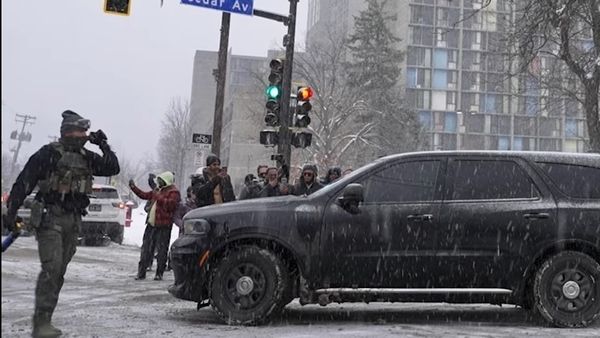
Progress on Snowy Hydro’s $6bn-plus pumped hydro project is being delayed as engineers address a hole as deep as 70 metres that has opened up in a tunnel, its officials have told Senate estimates.
As Guardian Australia reported on Sunday, a major boring machine working on the Snowy 2.0 project had been halted after subsidence a short distance from the start of a tunnel near Lake Tantangara.
Roger Whitby, Snowy Hydro’s chief operating officer, told senators that the hole was “of the order of 50-70 metres” deep. “We are working through that carefully so that the tunnel boring doesn’t become bogged,” he said.
One Nation senator Malcolm Roberts was surprised by the depth. “Wow. Having come from the mining industry, that would seem pretty severe.”
Snowy’s new chief executive, Dennis Barnes, later said the main contract cost had not been shifted from the $5.9bn price tag. It was also too early to say whether the difficulties at Tantangara would add to delays for the whole venture, which was pushed back 12 months to the end of 2027 late last year.
Snowy is working through the issues “closely” so that the borer, known as ‘Florence’, is no longer bogged, Whitby said.
“Until we get the machine ready for ‘unpausing’ we couldn’t say whether it will delay the whole project,” Barnes said.
Launched by the Turnbull government, the Snowy 2.0 project is intended to add 2,000 megawatts of storage to the national electricity market. By linking two existing dams, the aim would be to pump water to the higher reservoir during periods of cheap electricity and release it through hydro plants when power prices are high.
Snowy is also facing delays on its other major project, the 660MW Hunter power project at Kurri Kurri, near Newcastle.
Senators asked about the timing of the $600m-plus project and also, as the company states on its website, if it will be “capable of running initially on up to 10% hydrogen and with some minor additional investment … capable of up to 30%” when operational.
Barnes dismissed a question by NSW Nationals senator Ross Cadell that the ultimate cost could blow out to as much as $1.5bn.
“It won’t be anywhere near that,” Barnes said.
Still, the project would only produce its first power by May 2024 and be fully operational by the end of next year, both about 12 months later than originally planned.
Two reviews are also under way. One is looking at the overall costs of completion and the other how to increase the plant’s initial capability of burning about 15% hydrogen to the 30% proportion promised by federal Labor when it was in opposition.
Labor senator Jenny McAllister said, “we’re now asking Snowy Hydro to give consideration [to] how [Kurri Kurri] will fulfil those commitments”.
Barnes said the project review would be finished within six months but did not give a timeframe for when the hydrogen assessment would be ready.
“The good news is that all the equipment is on contract, which significantly de-risks the program from right now,” he said.







